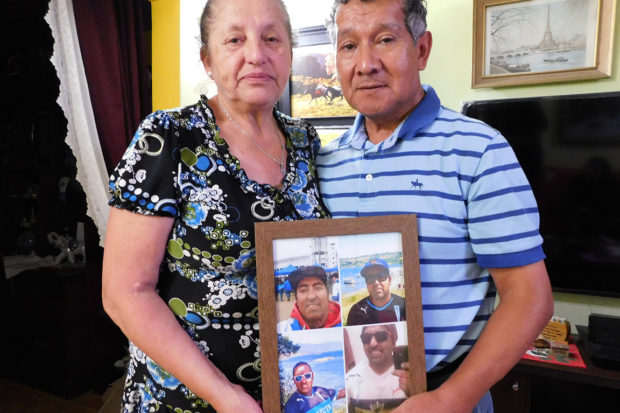
By Juan Trujillo Limones
“We had to resign ourselves to the fact that the person who was there in the coffin sealed with a paper from the Legal Medical Service (LMS) was my brother,” explains Daniel and a family member of Eduardo Alexis Caro del Pino, who lost his life inside a burned hardware store on Santa Rosa Avenue in the popular neighborhood of La Pintana in the Chilean capital on Oct. 20, 2019, two days after the start of the social revolt against official repression and an increase in the price of the Metro (the underground train system).
In the ensuing months, and perhaps until the April 26 plebiscite, things are happening that will not allow the country to be the same as before given that injustice is now a constant for thousands of victims of institutional violence.
According to the National Institute of Human Rights, since October there have been at least 24 fatalities; 770 complaints of torture, including 197 for sexual violence; 427 injuries or ocular trauma; and 3,746 people injured, of which 2,114 are for gunshots and pellets. At least 10,365 people have been detained by the carabinera (police).
The situation of injustice due to the deaths tarnishes the current political process in which Chileans will decide whether to modify the old Constitution, which was inherited from the dictatorship (1973–1989). Eduardo Caro’s case is a window into the tragic swamp of impunity faced by the families of those who have lost their lives in this social conflict.
The LMS determined that his death was by suffocation with toxic gases. However, the family has strong suspicions otherwise. “We doubt that theory because my brother died burned, burned; there must have been an examination of his lungs,” his brother says. The scene of the tragic event could have been modified because the area was not cordoned off, no experts arrived and the police did not intervene in the hardware store being looted for almost three days.
Dismayed, Caro’s mother, Patricia, explains that “they saw people dressed in beige pants and a blue shirt setting the premises on fire with bombs.”
Caro’s father, also named Eduardo, intervened emphatically: “They [the police] gave a free chance for people to loot everything. The construction material in that popular neighborhood became an attractive booty for anyone after the chaos and anxiety created by infiltrators.” He is suspicious of how the chain of events transpired. Like many neighbors in the area, Caro’s mother and sister looked on with amazement at the fire a few meters away, not knowing that their relative was inside.
According to witnesses, when the fire started, an elderly man with Alzheimer’s was trapped by the abundant smoke, Caro had come to his aid. There, they both perished.
Caro, 44, the father of a boy and a girl, was a driver for a food company and was missing for several hours, so his family believed he was detained at a police station. A DNA study confirmed, four days later, the compatibility of the burned remains with the family. The main suspicion in this case lies in the fact that during the simultaneous arson attacks in the metropolitan area, only one fire truck arrived, and no police acted to prevent or contain the fires.
Caro’s body was brought to the LMS. His mother remembers that they had to wait up to a week to watch over their son.
The long road to achieve justice has the family concerned about the accuracy of the police file on the case and meeting with a lawyer, who is taking on the case that will be heard before the Inter-American Commission on Human Rights. The distrust of Chilean justice is overwhelming; in this case, the family knows beforehand that the true identity of the remains delivered in a box sealed by the government cannot be determined.
In related matters, the total loss of vision of Gustavo Gatica and Fabiola Campillay and medical student Diego Lastrathe’s loss of an eye during the New Year’s have further fueled the social movement to challenge the national injustice.
On Feb. 7, the Musicians of Chile group blamed the police for burning down the Violeta Parra Museum, and on March 3, during a protest at Plaza de la Dignidad, 283 people were repressed and detained. Predictably, the political counterinsurgency continued in marches the following weeks.
Although President Sebastián Piñera threatened on March 1 on TVN to establish a new state of emergency, injustices in Chile will continue to feed the indignation and insubordination of the thousands of people mobilized from the burning salt flat in the north to southern Patagonia.
*****
Juan Trujillo Limones is an anthropologist and a freelance journalist. Contact him at xaureme9@outlook.com.
Advertising



